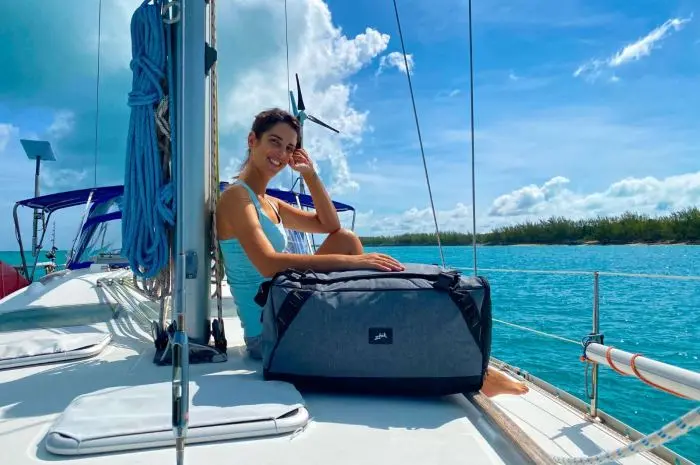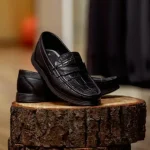Embarking on a sailing adventure is an exciting experience that requires specific preparation, especially when it comes to packing.
The limited space on a boat and the unique marine environment mean that every item you bring must be chosen with care. Here’s a comprehensive guide on what to pack for a sailing trip to ensure comfort, safety, and an unforgettable experience.
1. Clothing for Layering
The weather can be unpredictable at sea. Pack clothes that can be easily layered. Include lightweight, breathable items for sunny days and warmer layers like fleece or a windproof jacket for cooler temperatures. Quick-dry clothing is preferable, and don’t forget a waterproof jacket or rain gear.
Also Read
2. Footwear
Non-slip, closed-toe shoes are essential for safety on deck. Bring shoes with good grip and that you don’t mind getting wet. It’s also a good idea to have a pair of comfortable shoes or sandals for when you’re onshore.
3. Sun Protection
The sun can be particularly harsh on the water. Pack a high-SPF waterproof sunscreen, lip balm with SPF, sunglasses with UV protection, and a wide-brimmed hat or a cap. Consider bringing a sun-protective shirt or rash guard for extra protection.
4. Personal Safety Gear
While most boats will be equipped with safety gear, it’s wise to bring personal items like a life jacket (especially if you require a specific size), a safety harness, and a personal locator beacon, especially for more adventurous sailing.
5. Nautical Charts and Navigation Tools
While your skipper will likely have these, if you’re an active participant in navigation, bring your own nautical charts, a compass, and potentially a handheld GPS device.
6. Seasickness Remedies
Seasickness can affect anyone, so be prepared with seasickness remedies like medication, wristbands, or natural remedies like ginger chews. It’s best to start taking medication a few hours before you set sail.
7. Basic First Aid Kit
A basic first aid kit should include band-aids, antiseptic wipes, seasickness medication, pain relievers, and any personal medication. Check with the captain if there’s a full kit on board, but it’s always good to have your own essentials.
8. Waterproof Bags and Containers
Protect your electronics and important documents in waterproof bags or containers. This is essential to prevent damage from spray or accidental submersion.
9. Compact and Collapsible Gear
Space is at a premium on a boat, so opt for compact and collapsible items where possible. This includes things like towels, water bottles, and even travel-friendly cookware if you’ll be preparing your meals.
10. Entertainment and Leisure Items
Pack a few books, playing cards, or travel games for entertainment during downtimes. If you enjoy journaling or sketching, bring a notebook to document your adventure.
11. Camera and Binoculars
A waterproof or water-resistant camera is ideal for capturing memories. Binoculars can also enhance your experience, especially for bird watching or scanning the horizon.
12. Snacks and Hydration
Bring along non-perishable snacks like nuts, energy bars, and dried fruits. Staying hydrated is crucial, so pack a reusable water bottle that you can refill on the boat.
13. Headlamp or Flashlight
A headlamp or a small flashlight is useful for moving around the boat at night. Ensure it’s waterproof and consider one with a red light setting to avoid disturbing others during night watches.
14. Eco-Friendly Toiletries
Opt for biodegradable and eco-friendly toiletries, including soap, shampoo, and toothpaste, to minimize your environmental impact. Remember, anything that goes down the drain will end up in the marine environment.
15. Travel Documentation
Ensure all your travel documentation is in order, including passports, visas, and sailing certifications if required. Keep these in a waterproof container for safekeeping.
16. Sleeping Bag or Bedding
Depending on the boat’s amenities, you might need to bring your own sleeping bag or bedding. Opt for a compact and lightweight sleeping bag suitable for the climate.
17. Reusable Utensils and Containers
If you’re responsible for your meals, bring reusable utensils and containers to reduce waste. Collapsible bowls and cups are space-efficient options.
Conclusion
Packing for a sailing adventure requires a balance between preparedness and practicality. By focusing on essential items and considering the unique environment at sea, you can ensure that you’re well-equipped for a comfortable and enjoyable journey.
Remember, every bit of space on a boat counts, so pack thoughtfully and enjoy the freedom and beauty of life at sea.






















